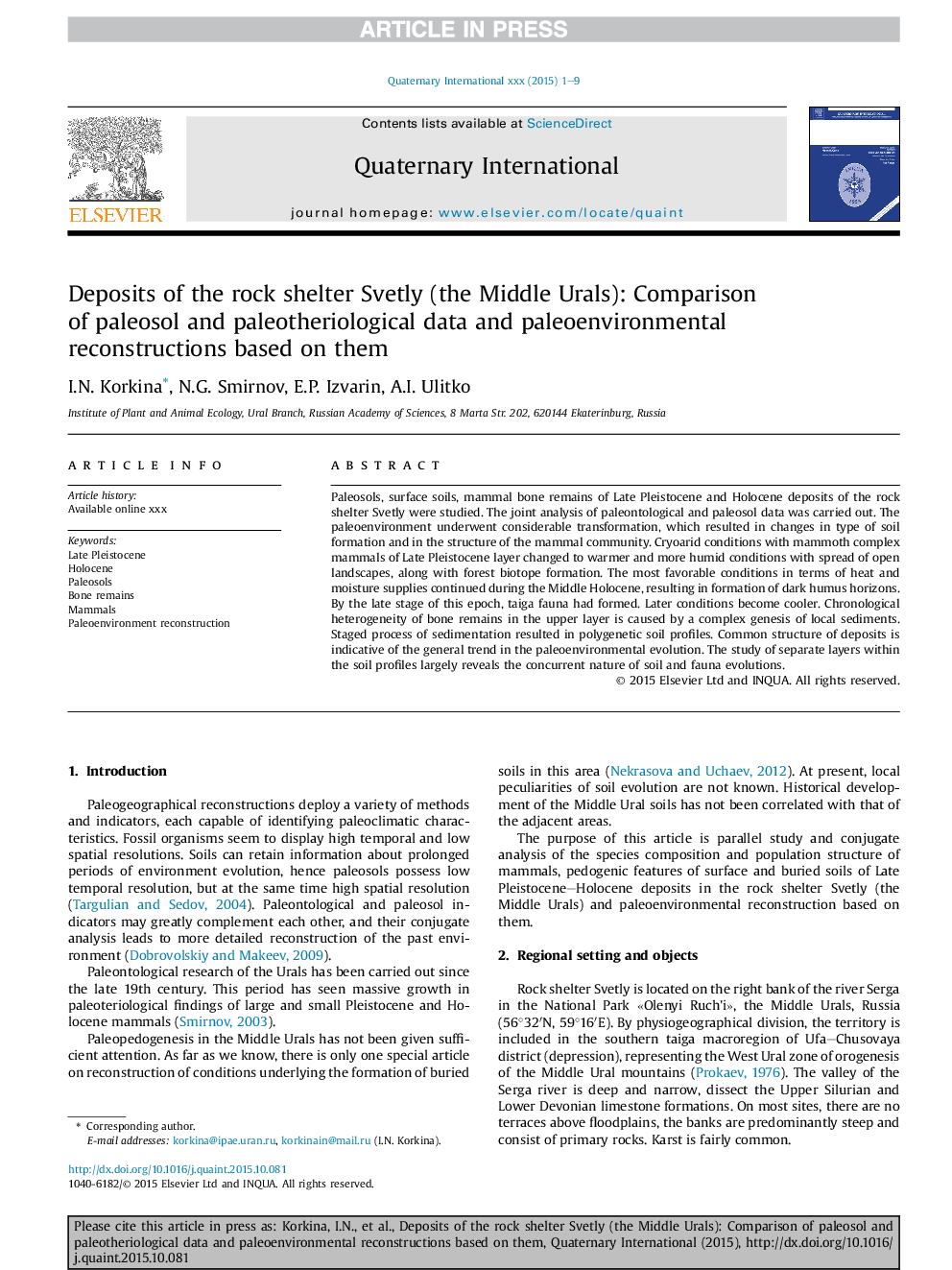| Article ID | Journal | Published Year | Pages | File Type |
|---|---|---|---|---|
| 5113950 | Quaternary International | 2016 | 9 Pages |
Abstract
Paleosols, surface soils, mammal bone remains of Late Pleistocene and Holocene deposits of the rock shelter Svetly were studied. The joint analysis of paleontological and paleosol data was carried out. The paleoenvironment underwent considerable transformation, which resulted in changes in type of soil formation and in the structure of the mammal community. Cryoarid conditions with mammoth complex mammals of Late Pleistocene layer changed to warmer and more humid conditions with spread of open landscapes, along with forest biotope formation. The most favorable conditions in terms of heat and moisture supplies continued during the Middle Holocene, resulting in formation of dark humus horizons. By the late stage of this epoch, taiga fauna had formed. Later conditions become cooler. Chronological heterogeneity of bone remains in the upper layer is caused by a complex genesis of local sediments. Staged process of sedimentation resulted in polygenetic soil profiles. Common structure of deposits is indicative of the general trend in the paleoenvironmental evolution. The study of separate layers within the soil profiles largely reveals the concurrent nature of soil and fauna evolutions.
Related Topics
Physical Sciences and Engineering
Earth and Planetary Sciences
Geology
Authors
I.N. Korkina, N.G. Smirnov, E.P. Izvarin, A.I. Ulitko,
